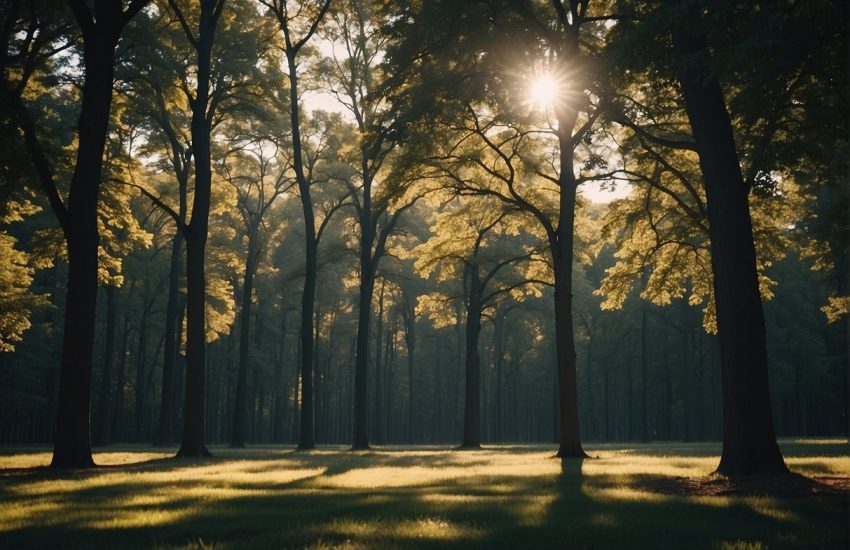Fastest Growing Shade Trees for Indiana: Top Options for Your Yard
Indiana is known for its hot and humid summers, making it essential to have shade trees to provide relief from the scorching sun. With the increasing demand for shade trees, gardeners and homeowners are always on the lookout for the fastest-growing trees that can provide shade quickly. In this article, we will explore some of the fastest-growing shade trees that are suitable for Indiana’s climate.

One of the most popular fast-growing shade trees in Indiana is the Northern Red Oak. This tree can grow up to 3 feet per year, reaching a mature height of 60-75 feet. The Northern Red Oak is known for its stunning fall foliage, which ranges from bright red to deep burgundy. It is also a hardy tree that can tolerate a wide range of soil conditions, making it an ideal choice for homeowners.
Another fast-growing shade tree that is suitable for Indiana’s climate is the Tulip Tree. This tree can grow up to 2-3 feet per year and can reach a mature height of 70-90 feet. The Tulip Tree is known for its unique tulip-shaped leaves and beautiful yellow-green flowers that bloom in the spring. It also has a straight trunk, making it a popular choice for lumber production. With its fast growth rate and beautiful features, the Tulip Tree is an excellent choice for homeowners looking for a shade tree that can provide quick relief from the sun.
Top Fast-Growing Shade Trees for Indiana
Indiana is known for its warm summers and cold winters, making it the perfect environment for fast-growing shade trees. These trees not only provide shade but also add aesthetic value to your property. Here are some of the top fast-growing shade trees for Indiana.
Red Maple (Acer Rubrum)
The Red Maple is a popular choice for homeowners in Indiana due to its vibrant foliage. Its lobed leaves turn a brilliant red in the fall, making it a stunning addition to any landscape. This tree grows up to 3 feet per year and can reach a height of 40-60 feet. It thrives in USDA hardiness zones 3-9 and prefers moist, well-drained soil.
Northern Red Oak (Quercus Rubra)
The Northern Red Oak is a fast-growing shade tree that adds both beauty and value to your property. Its heart-shaped leaves turn a deep red in the fall, making it a stunning sight. This tree grows up to 2 feet per year and can reach a height of 60-75 feet. It thrives in USDA hardiness zones 3-8 and prefers well-drained soil.
Quaking Aspen (Populus Tremuloides)
The Quaking Aspen is a fast-growing shade tree that is known for its white bark and heart-shaped leaves. This tree grows up to 3 feet per year and can reach a height of 50-70 feet. It thrives in USDA hardiness zones 1-7 and prefers moist, well-drained soil.
Tulip Tree (Liriodendron Tulipifera)
The Tulip Tree is a fast-growing shade tree that is known for its vibrant foliage and tulip-shaped flowers. Its leaves turn a beautiful yellow in the fall, making it a stunning addition to any landscape. This tree grows up to 3 feet per year and can reach a height of 70-90 feet. It thrives in USDA hardiness zones 4-9 and prefers moist, well-drained soil.
Hackberry (Celtis Occidentalis)
The Hackberry is a fast-growing shade tree that is known for its hardiness and adaptability. Its lobed leaves turn a beautiful yellow in the fall, making it a stunning sight. This tree grows up to 2 feet per year and can reach a height of 40-60 feet. It thrives in USDA hardiness zones 2-9 and prefers well-drained soil.
When planting trees, it is important to consider the soil type, sunlight, and space available. With these fast-growing shade trees, homeowners in Indiana can enjoy the benefits of shade and beauty for years to come.
Considerations for Planting and Maintenance

When it comes to planting and maintaining shade trees in Indiana, there are a few key considerations to keep in mind. By taking the time to select the right tree for your landscape, follow proper planting practices, and provide ongoing care and maintenance, you can help ensure that your shade trees thrive for years to come.
Selecting the Right Tree for Your Landscape
When choosing a shade tree for your landscape, it’s important to consider factors such as the tree’s mature size, growth rate, and tolerance to environmental conditions. Some fast-growing shade trees that are well-suited to Indiana’s climate include the Northern Red Oak, the Tulip Tree, and the American Sycamore.
It’s also important to consider the tree’s placement in your landscape. Be sure to choose a location that provides adequate sunlight and enough space for the tree to grow to its full size without interfering with power lines, buildings, or other structures.
Tree Planting Best Practices
Proper planting techniques can help ensure that your shade tree gets off to a healthy start. When planting your tree, be sure to dig a hole that is at least twice as wide as the tree’s root ball, and deep enough so that the top of the root ball is level with the ground.
Before planting, be sure to remove any rocks, weeds, or other debris from the planting site. You may also want to consider adding compost or other organic matter to the soil to improve its fertility and drainage.
Ongoing Care and Maintenance
After planting your shade tree, it’s important to provide ongoing care and maintenance to help it thrive. This may include regular watering, fertilization, and pruning to remove dead or damaged branches.
Homeowners should also be on the lookout for signs of disease or pest infestations, which can impact the health of your shade tree. Some common tree diseases in Indiana include Dutch Elm Disease and Oak Wilt, while pests such as the Emerald Ash Borer can cause significant damage to ash trees.
Finally, it’s important to consider the environmental conditions in your area when maintaining your shade tree. Exposure to air pollution, heat, and noise pollution can all impact the health of your tree, so be sure to take steps to mitigate these factors when possible.


